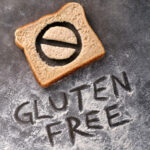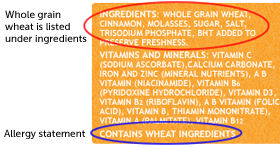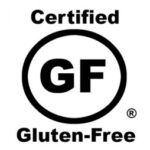
What foods should my teen avoid on the gluten–free diet?
Following a gluten–free diet means your teen should completely avoid all foods that contain gluten. Foods that contain gluten should never be eaten by anyone with celiac disease. To eliminate gluten-containing food your teen should:
- Remove grains that contain gluten from her diet. She should not eat any food that contains wheat, barley, or rye. Keep in mind that wheat has many forms. She should avoid products that include bulgur, durum, graham, kumut, spelt, and semolina. These are all wheat!
- Your teen should not eat any obvious gluten containing foods such as: bagels, breads, cakes, candy, cereals, crackers, cookies, dressing, flour tortillas, gravy, ice cream cones, licorice, malts, rolls, pretzels, pasta, pizza, pancakes, sauces, stuffing, soy sauce, veggie burgers, vegetarian bacon/vegetarian chicken patties (many vegetarian meat substitute products contain gluten), and waffles. Please note this is NOT a complete list.
- Look for “hidden” sources of gluten. Your teen should NOT eat foods that have gluten–containing ingredients listed in certain products such as ale, barley, beer, bleached flour, bran, bread flour, brewer’s yeast, brown flour, brown rice syrup (unless the food is labeled gluten free), bulgur, couscous, dextrin (unless source gluten–free), durum, farina, farro, hydrolyzed vegetable (wheat) protein, gluten flour, graham flour, granary flour, groats, harina, kumut, malt, malt extract, malt syrup, malt vinegar, matzo, modified starch (unless the source is gluten–free), rye, orzo, seitan semolina, self–rising flour, spelt, smoke flavoring, soy sauce, triticale, wheat germ, wheat and white flour, whole meal flour, and vegetable gum.
Why should my teen omit barley from her diet?
Barley contains gluten and is frequently used to make malt. This is often used as a sweetener flavoring. As a general rule your teen should avoid natural or malt flavorings. If there are foods your teen likes to eat that contain “natural” or “malt” flavorings on the ingredient list, contact the company to see if these flavorings came from a non–gluten source.
Does my teen need to avoid oats?
Oats may contain gluten because they are often processed in the same factories as wheat. It’s best to check with your teen’s health care provider to see if she can eat traditional oats or if you need to look for certified gluten-free oats. To find out if your teen’s favorite brand of oatmeal is gluten–free, call the company or check their website. Some brands, such as Bob’s Red Mill, Glutenfreeda, and GF Harvest make oatmeal that is certified gluten-free. When eating out or when in doubt, avoid oats and oat-containing cereals and breads.
What foods are safe to eat on the gluten–free diet?
Many foods are naturally gluten–free, including milk, butter, cheese, fruits and vegetables, fresh meats, fish, poultry, eggs, beans, nuts, seeds, corn, quinoa, and rice. While most breads, pastas, cereals and baked goods contain gluten, there are several grains and flours that are also naturally gluten–free which can be used to make breads, cereals, pastas, snacks and baked goods – and many pre-made products on the market are made from these grains and flours. Think of these grains and their products as safe which are safe to eat on the gluten–free diet.
How can I tell if a food is gluten–free?
A product labeled “gluten-free”, “no gluten” or “without gluten” is the fastest and easiest way to identify a gluten–free product. Manufactures can use these terms if they comply with the FDA rule “gluten–free”.
Another way to tell if the product contains gluten is to read the allergen statement on packaged foods. The FDA food allergen labeling law requires food companies to label all foods that have wheat or contain wheat products. The allergen statement is found at the end of the ingredient list on packaged goods. Read the allergen statement, if it says “contains wheat”, this means it has gluten and it is a unsafe.
The food labeling law does NOT cover barley, rye, or oats. This means if the allergy statement does not include wheat, you need to then read through the ingredient list for all of the other possible sources of gluten. If you don’t see any of those words in the ingredient list, then the food is most likely safe.
In the sample ingredient label below, the ingredients are circled in red and the allergy statement is circled in blue. The food, which contains whole grain wheat, is not safe.

 There is also a symbol that may appear on packaging of gluten-free foods, which the Gluten Intolerance Group has deemed “Certified Gluten Free.” This symbol represents that the food manufacturer has applied for and been granted certification of the product’s status of gluten-free, by submitting test results showing that there is no gluten contained in the product.
There is also a symbol that may appear on packaging of gluten-free foods, which the Gluten Intolerance Group has deemed “Certified Gluten Free.” This symbol represents that the food manufacturer has applied for and been granted certification of the product’s status of gluten-free, by submitting test results showing that there is no gluten contained in the product.
You might notice that some food labels have the following statements and are unsure whether or not you should eat them. When in doubt, ask your dietitian or medical provider, but in general:
- “May contain traces of wheat” – AVOID
- “Made on shared equipment with wheat ingredients” – AVOID
- “Manufactured in a facility that also processes wheat ingredients” – OK
Our health guides are developed through a systematic, rigorous process to ensure accuracy, reliability, and trustworthiness. Written and reviewed by experienced healthcare clinicians from Boston Children's Hospital, a Harvard Medical School teaching hospital and consistently ranked as a top hospital by Newsweek and U.S. News & World Report, these guides combine clinical expertise, specialized knowledge, and evidence-based medicine. We also incorporate research and best practices from authoritative sources such as the CDC, NIH, PubMed, top medical journals, and UpToDate.com. Clinical specialists and subject matter experts review and edit each guide, reinforcing our commitment to high-quality, factual, scientifically accurate health information for young people.